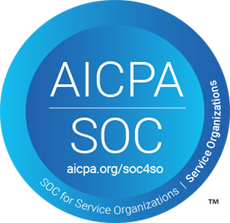It doesn’t take long to feel downright discouraged and a little panicked when reading about the current state of healthcare…much less the prognosis for the future. It’s bleak. Everyone is burned out. But despite this outlook, there are bright, young men and women still turning to healthcare for their careers! And it’s a good thing, too, because we need more providers than ever who are actively choosing to care for patients and enter into the fray of an industry that is losing care staff, nurses, and providers in droves. Post-pandemic burnout has wreaked havoc on an already-stressed cohort of healthcare professionals, so the need to replenish the hospitals, health systems, and clinics – not to mention emerging care settings like Home Health – is absolutely vital. But this generation of healthcare providers will need different tools and support to not only do their jobs, but to sustain in the face of adversity and changing care needs. Better communication between providers and care settings will be key for keeping the next generation engaged and eager to stay on the front lines when we need them most.
The Next Wave of Providers Bring New Focus and Priorities to Healthcare
An article in Medical Economics pointed to a focus on the next generation of healthcare providers as a trend for health systems in 2023. Young doctors and nurses are seeking different things than generations past, such as flexibility and work-life balance that have historically eluded these roles (and contributed to much of the aforementioned burnout). We should applaud these individuals for fighting for sustainable working conditions, while keeping in mind that not everyone is destined for the acute setting. Leveling up the collaboration and sense of community between hospitals and post-acute care providers will be huge for cultivating the team experience that new doctors crave. And frankly, we know this is vital for patient outcomes and cost management as well, so it’s a win all around!
Another amazing opportunity that comes with providers and nurses coming out of med school is their grasp of and value placed on social determinants of health that create inequities in healthcare. Beyond the technical acumen associated with becoming a provider, there is an increased capacity for soft skills with younger cohorts in terms of looking at whole persons and discussing difficult topics. This is where fresh perspectives and worldviews benefit the industry, especially in light of challenges that prevent equal access to care. But what will move the needle on outcomes is the ability to make that information actionable and shareable…and this is where technology can give wings to this opportunity, or absolutely sink it.
Efficient Communication Tools Are Necessary to Support the Next Generation of Healthcare Providers
Without using the M-word, it’s worth remembering that many new providers and nurses have been exposed to technology and smart devices for as long as they can remember. Communication is almost taken for granted, so to retain and empower new providers, healthcare IT vendors have to streamline collaboration channels to simple, nimble, intuitive user experiences that don’t require a huge learning curve or create friction for tech-savvy physicians. Security absolutely matters, as does efficient exchange of patient information, so leveraging networks of communication to exponentially open the floodgates for compliant and meaningful exchange of patient data is a must for engaging eager “newbies” who are ready to dive in and provide immense value. We know we need them more than ever, so the time is now to rethink interoperability and start focusing on the most efficient means to healthcare communication without borders or burden.







